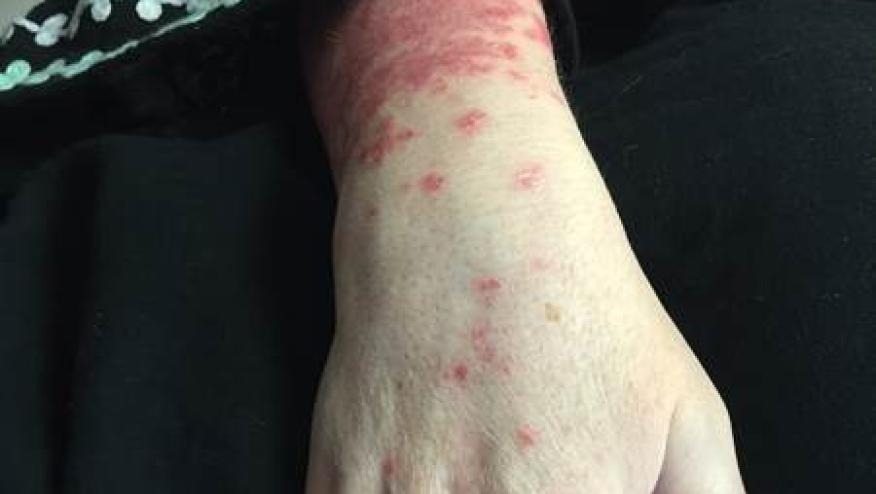Joint Surgery Rates Remain High in Psoriatic Arthritis Save

The incidence rate of joint surgery among patients with psoriatic arthritis (PsA) has remained persistently high, double that of the general population, according to a new Danish cohort study.
During the years 1996-2000, the incidence rate of joint surgery was 18.2 per 1,000 person-years among PsA patients compared with 7.2 per 1,000 in the general population, according to Jørgen Guldberg-Møller, MD, of Copenhagen University Hospital in Frederiksberg, Denmark, and colleagues.
This rate remained twice that of the general population by the years 2009-2012, at 21.1 per 1,000 person-years versus 10.7 per 1,000 -- thus increasing in both groups -- despite the availability of effective disease-modifying biologic treatments in PsA, the team reported in Annals of the Rheumatic Diseases.
To shed further light on the question, Guldberg-Møller and colleagues analyzed data from the Danish National Patient Registry, identifying 11,960 patients diagnosed with PsA from 1996 to 2017. (Those enrolled from 2013-2017 were not included in the time trend analysis because they had not been followed for a full 5 years.)
Patients were matched with 109,296 controls drawn from the general population in the national civil registration system. Participants' mean age was 50, and 57% were women.
They found that the incidence rate ratio for first joint surgery among patients with PsA was twice that of the general population for all included time periods:
- 1996-2000: IRR 2.4 (95% CI 2-2.9)
- 2001-2004: IRR 2.3 (95% CI 1.9-2.7)
- 2005-2008: IRR 2 (95% CI 1.7-2.3)
- 2009-2012: IRR 2 (95% CI 1.7-2.2)
The researchers then compared the incidence rates of joint-sacrificing surgery, defined as arthroplasty and arthrodesis, with non-joint sacrificing surgery, such as procedures involving soft tissue, joint surfaces, or synovium. For joint-sacrificing surgery, the overall rates from 1996-2012 were 10.7 per 1,000 person-years among PsA patients vs 3.7 per 1,000 among controls, and for non-joint sacrificing surgery, the rates were 13 and 7 per 1,000, respectively.
They calculated the cumulative incidence proportions of any joint surgery through 2017. Among PsA patients, these were 1.7% (95% CI 1.4%-2.0%) after 5 years, 10.4% (95% CI 9.6%-11.2%) after 10 years, and 28.9% (95% CI 27.2%-30.6%) after 15 years. Among the general population, the corresponding numbers were 0.5% (95% CI 0.5%-0.6%), 4.6% (95% CI 4.5%-4.8%), and 14.6% (95% CI 14.2%-15.1%), respectively.
Further analysis with age stratification revealed that the risk of joint-related surgery after 15 years of follow-up was higher for PsA patients in all age groups, and that the rate for PsA patients ages 18 to 40 was higher, at 22.4% (95% CI 19.3%-25.6%), than for controls ages ≥60, which was 19.9% (95% CI 18.7%-20.9%).
Moreover, after only 5 years of follow-up, the cumulative incidence of joint-sacrificing surgery was 1.2% (95% CI 0.9%-1.6%) in PsA patients ages 40-60, compared with 0.9% (95% CI 0.7%-1.0%) of controls ages 60 and older.
Overall, the cumulative risk of surgery at 15 years post-diagnosis was 29% among PsA patients in this study, the group found.
The high rate of joint surgery remains "a puzzle," and "an important unmet need," they concluded.
"Future studies will be needed to identify the impact of biological DMARD treatment on the need for surgery using individual-level based information," the authors concluded.
A study limitation, the researchers noted, was the possibility of disease misclassification, which is common to all registry-based studies. And, because of the study's observational design, the authors indicate that it is not clear whether their results reflect changes in referral patterns, or a shift in diagnosis focus.
Source Reference: Annals of the Rheumatic Diseases 2019; DOI: 10.1136/annrheumdis-2019-215313









If you are a health practitioner, you may Login/Register to comment.
Due to the nature of these comment forums, only health practitioners are allowed to comment at this time.